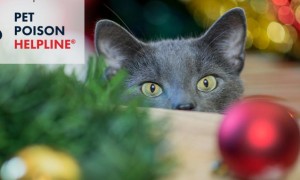Are Cats Evil By Nature?
The age-old debate about whether cats are inherently evil has been a topic of discussion among pet lovers, psychologists, and animal behaviorists alike. Common stereotypes paint cats as aloof, mercurial, and sometimes downright mean-spirited compared to their canine counterparts. However, is it accurate to label cats as “evil” by nature, or is it simply a misunderstanding of their unique behaviors and instincts? To truly explore this question, we need to delve into feline behavior, their evolutionary background, and the cultural narratives that shape our perceptions of them.
Misunderstanding Cat Behavior
Cats are often perceived as vicious or untrustworthy for several reasons. Firstly, they exhibit behaviors that can be interpreted as cruel or indifferent. For example, when a cat brings its owner a dead mouse, it may seem like an act of savagery. In reality, this is an instinctual behavior driven by their natural predatory instincts. Cats are solitary hunters in the wild, and presenting prey is a way of sharing their success with the group—something that might seem like an act of gifting rather than wickedness.
Additionally, cats possess a level of independence that can be misread as aloofness or even “evil.” Unlike dogs, who are pack animals and thrive on social structure and loyalty to their owners, cats are more self-reliant and prefer to set their own boundaries. This independence can lead to misinterpretations of their behavior, leading many to label them as malevolent simply because they do not seek constant companionship or validation.
Evolutionary Background
To understand cat behavior, it’s essential to consider their evolutionary background. Cats are descendants of the African wildcat, which was adept at surviving in a more hostile environment than dogs. This evolutionary history has shaped their behavior, instincts, and social structures, leading them to be more solitary and self-sufficient than dogs.
Moreover, cats’ hunting techniques involve stealth and efficiency, skills that require patience and precision. Unlike pack hunters, they must rely on their own abilities to catch prey, which could further contribute to their reputation as solitary beings who don’t require bonds with humans. This natural behavior has been carried through generations and doesn’t imply any inherent malevolence but rather highlights survival instincts that humans might misinterpret.
Cultural Narratives
Cultural narratives also play a significant role in shaping our perceptions of cats. In various societies, cats have been demonized and associated with witchcraft or negative superstitions. In medieval Europe, cats, particularly black ones, were often seen as omens of bad luck or connections to witches. These notions have lingered in pop culture, perpetuating the idea that cats are somehow malicious or mischievous.
In contrast, dogs have been portrayed more positively in literature and media, often personified as loyal companions. This leads people to view dogs as noble creatures and cats as duplicitous. However, such generalizations overlook the complexity of the animals’ behavior and the social dynamics that come into play when humans interact with these creatures.
Understanding and Embracing Differences
Rather than labeling cats as evil, it’s essential to embrace the complexities of their behavior and understand them as different but equally valuable companions. Just like any other animal, cats have their personalities, quirks, and preferences. They can be affectionate, playful, and loving, often forming deep bonds with their owners despite their seeming independence.
The key to a healthy relationship with a cat lies in understanding their behavioral cues. For example, a cat that swats at your hand may not be acting out of malice but rather communicating that it feels threatened or overstimulated. Learning how to interpret these signals can greatly improve the human-feline relationship and allows for a more harmonious coexistence.
Conclusion
In conclusion, the idea that cats are evil by nature is a mischaracterization that overlooks their evolutionary background, behavioral traits, and the cultural narratives that feed misconceptions. Cats are not inherently malevolent or cruel; they are simply governed by instincts honed over thousands of years of evolution. Understanding their behavior and creating a positive environment for them can foster a loving bond that challenges the stereotype of cats as villainous companions.
Ultimately, like all animals, cats deserve our understanding rather than judgment. Perhaps, by embracing their unique natures, we can find joy in their companionship and learn to appreciate the beauty of what makes cats, well, cats. So the next time a cat gazes at you with that inscrutable look, remember: it’s likely not evil; it’s simply being its true self.





